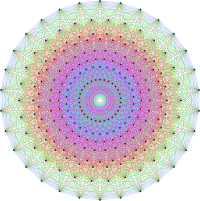Representation theory of the Galilean group

Okay kiddo, let me explain what the Galilean group is and how representation theory helps us understand it.
So, imagine you and your friend are standing on a train that's moving really fast. You throw a ball to your friend and it seems like the ball is going straight, but to someone watching from the ground, the ball is actually moving in a curved path because the train is also moving. This is because of something called the Galilean transformation, which is basically a way to change the coordinates of things that are moving.
Now, the Galilean group is a fancy name for all the possible ways things can move and still look the same. So if you throw the ball to your friend while you're both moving on a train, the Galilean group describes all the different ways that ball can move and still look the same.
Representation theory is a way to help us understand the Galilean group by breaking it down into smaller parts. Imagine you have a bunch of Legos and you want to build a big tower. You can't just pile all the Legos on top of each other, you need to fit them together in specific ways to make the tower strong and stable. Representation theory is like figuring out how to fit the Legos together to make the tower.
In the same way, representation theory breaks the Galilean group down into smaller pieces that we can understand. We can look at one particular type of motion, like a ball moving in a straight line, and see how it fits into the bigger picture of all the possible ways things can move.
By using representation theory, we can also predict how things will move in different situations. If we know how the Galilean group works, we can figure out how a ball will move if we throw it on a different planet, for example.
So that's the basic idea of the representation theory of the Galilean group. It's like taking a big puzzle and breaking it down into smaller, more manageable pieces so we can understand it better.
So, imagine you and your friend are standing on a train that's moving really fast. You throw a ball to your friend and it seems like the ball is going straight, but to someone watching from the ground, the ball is actually moving in a curved path because the train is also moving. This is because of something called the Galilean transformation, which is basically a way to change the coordinates of things that are moving.
Now, the Galilean group is a fancy name for all the possible ways things can move and still look the same. So if you throw the ball to your friend while you're both moving on a train, the Galilean group describes all the different ways that ball can move and still look the same.
Representation theory is a way to help us understand the Galilean group by breaking it down into smaller parts. Imagine you have a bunch of Legos and you want to build a big tower. You can't just pile all the Legos on top of each other, you need to fit them together in specific ways to make the tower strong and stable. Representation theory is like figuring out how to fit the Legos together to make the tower.
In the same way, representation theory breaks the Galilean group down into smaller pieces that we can understand. We can look at one particular type of motion, like a ball moving in a straight line, and see how it fits into the bigger picture of all the possible ways things can move.
By using representation theory, we can also predict how things will move in different situations. If we know how the Galilean group works, we can figure out how a ball will move if we throw it on a different planet, for example.
So that's the basic idea of the representation theory of the Galilean group. It's like taking a big puzzle and breaking it down into smaller, more manageable pieces so we can understand it better.
